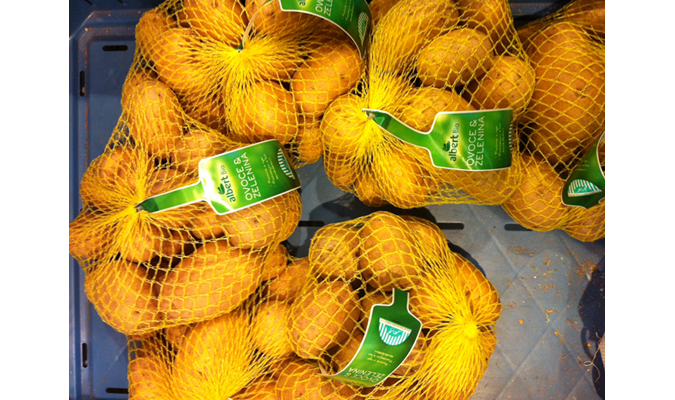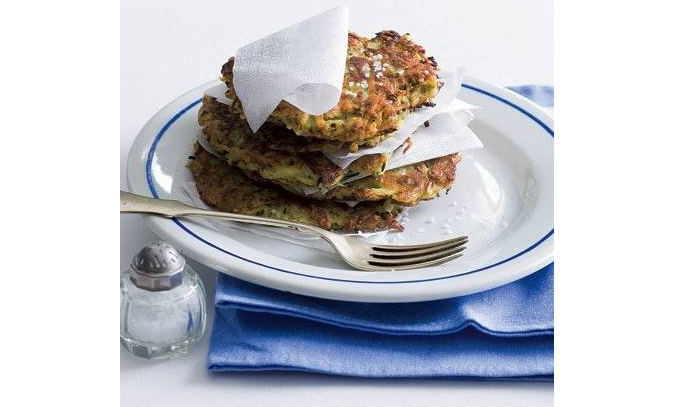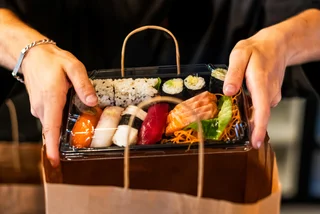All over the world, vegetarians and carnivores alike enjoy potatoes. They’re affordable and nutritious – loaded with fiber, Vitamin C, potassium, vitamin B1, B6, niacin and folate. They’re versatile, easy to cultivate, and store well. The native Peruvian plant first appeared in Europe in 1750; conquistadors returning from the New World brought several exciting, new plants, but it was a while before Europeans saw the potato as anything but animal fodder. Today this über tuber is a cornerstone of the Czech diet. It shows up on most lunch and dinner plates and even plays a starring role in every Christmas dinner – in the form of potato salad.
There are thousands of varieties of potatoes in the world. Of these, about ninety are registered in the Czech Republic. Commercial varieties include Agata, Milva, Elfe, Bernadette, Marabel, and Krone. On labeled bags, you can find the species written in all caps, next to information about country of origin. You won’t find Russet or Yukon Gold here, but Czech soil produces excellent potatoes and once you know your way around them, you’ll be more than satisfied with the local selection. This website – www.europotato.org – outlines the characteristics of all potato species, so research before you buy and you won’t be disappointed.
What kind to buy?
Potatoes come in two varieties: yellow and white. The skin color doesn’t matter. The yellow is oilier and holds its shape well after cooking. The starchier white potatoes break apart easily.
Czech potatoes are sold in three categories, or “Varné typy”: A, B and C.
• Type A potatoes are best suited for salads.
• Type B are the versatile middle ground potatoes, good for frying, baking, roasting, and soups.
• Type C is perfect for mashed potatoes and foods made from cooked potato mass, like potato pancakes. C is also ideal for home-made fries.
White potatoes are absorbent, and have a smoother texture when mashed. Locals tend to prefer yellow to white. “Yellow potatoes are for humans, white ones for pigs,” one vendor exclaimed. But if you look for “C” potatoes your needs will be covered in terms of frying and pureeing. Most potatoes sold in supermarkets are labeled, but if you’re buying them from a stand where they’re loose, you’ll have to ask for the type. The answer will most likely be “ábéčko,” meaning A/B.
What’s so great about new potatoes?
A new potato is one that is harvested early – and it can be any variety. They are also known as ‘early potatoes’ or ‘fingerlings’. The younger the potato, the less time it has had to convert its starch to sugar. That’s why some people with special dietary needs can eat new potatoes, but not regular potatoes.
The skin on new potatoes is so thin that it doesn’t need to be removed, and that means more nutrition and fiber. They’re excellent for boiling or steaming; less so for frying. New potatoes cost more, and are only available in spring and early summer.
Should you buy organic?
Choosing local, organic produce whenever possible is the best option for your health and the environment. Luckily, Czech soil produces excellent potatoes and it’s not hard to find organic ones – called “Bio.” Farmers’ markets sometimes have them, but so do hypermarkets. Check the bio produce section. Because potatoes are prone to pests, the method for cultivating bio ones means a higher cost. So is it worth it?

Based on the level of chemical residue on all produce, this chart shows which foods are the most crucial ones to buy as organic. The potato is in the top 12 – the “Dirty Dozen” – so there’s good reason to opt for the bio version whenever available. These charts are based on US crops, however. It’s difficult to tell whether local agricultural practices are better, or worse.
Potato dos and don’ts
• DO store them in a dark, well-ventilated place that is cool and dry. DON’T keep them in the refrigerator.
• DO cut off any sprouts; the spuds are still ok to eat, but discard them once they go soft.
• DON’T eat a potato that has turned green. These contain toxic solanine.
• DO boil potatoes in just enough water to cover them.
• DON’T put potatoes in boiling water. Bring water to the boil with potatoes in it – otherwise they cook unevenly.
• DON’T use a food processor to make mashed potatoes. The blades break down the starches– making grey goo.
Did you know?
• Potatoes are in the same nightshade family as tomatoes and eggplants. The toxic tobacco and belladonna plants also belong to this group.
• Ireland was quick to adopt the potato, England was slower – calling it “Ireland’s Lazy Root” – while the Scottish refused to eat it altogether.
• The name “potato” comes from the Spanish “batata” – or sweet potato, which was commonly eaten in Spain when the first potatoes were introduced. But these plants are not related.
• It is the world’s fourth-largest food crop, after rice, wheat, and corn. Eastern and Central Europe produce the most per capita. China produces the most nationally. America and Belarus consume the most, but the highest per capita consumption belongs to Uganda! (www.bigsiteofamazingfacts.com/who-eat-the-most-potatoes)
• Since the mid-19th century Czechs have been producing hard alcohol from potatoes or sugar beets with rum flavor added and calling it Tuzemsky Rum or “Domestic Rum.” EU regulations deemed that it could not be called rum anymore because it’s not distilled cane sugar, and so a new word – Tuzemak – was invented.
• German peasants in the 1800’s were reluctant to cultivate the crop, but King Frederik decreed anyone not growing it would have their ears and noses cut off! *
• Catherine the Great of Russia recognized the potato’s power to keep the masses fed, so she ordered her people to grow them. They refused – and the Church backed them up – claiming that if the Bible didn’t mention potatoes, they weren’t meant for human consumption.*
• During the cold war, it was widespread propaganda that Americans were responsible for dropping potato bugs from airplanes onto crops – in order to starve the population!*
• Because the genetic makeup is so similar, it’s possible to graft a tomato plant onto a potato plant, and harvest both from the same plant.
Try these easy recipes – and wow your Czech guests
• Bramboračka – Potato Soup (watch a video here)
• Bramborák – Potato Pancake
• Bramborové knedlíky – Potato Dumplings

Bramboráky (source:www.apetit-online.cz)
Decorative stamp. Cure for warts. What’s your favorite use for a potato?
***
Deciphering Czech food products series:
- Dairy – A helpful guide to milk, butter, yogurt, and more..
- Beef Cuts – How to ask for what you need at Czech butcher’s?
- Czech Potatoes – How it Rose from the Underground to Czech Tables Everywhere
- Beer – Czech Beer’s Got Style
- Bread – A guide to bread and other baked goods
- Cold Cuts – We look at ham, sausage and other goodies
- Cheese – Czech (and Slovak) Cheeses
- Flour and other baking products
- Vegetable – We take a stroll through the Czech veggie section
Related articles
- Farewell Fake Rum? A Short History of the Endangered Czech Spirit
- Cocktail Emporium with Prague-Themed Drinks Opens on Wenceslas Square
- Prague Named among Top 10 Vegan-Friendly Capitals In 2017
- Czech Republic Will Continue to Fight Inferior Food Quality
- Take a Look Inside Prague’s New Temple For Meat Lovers












 Reading time: 6 minutes
Reading time: 6 minutes 























